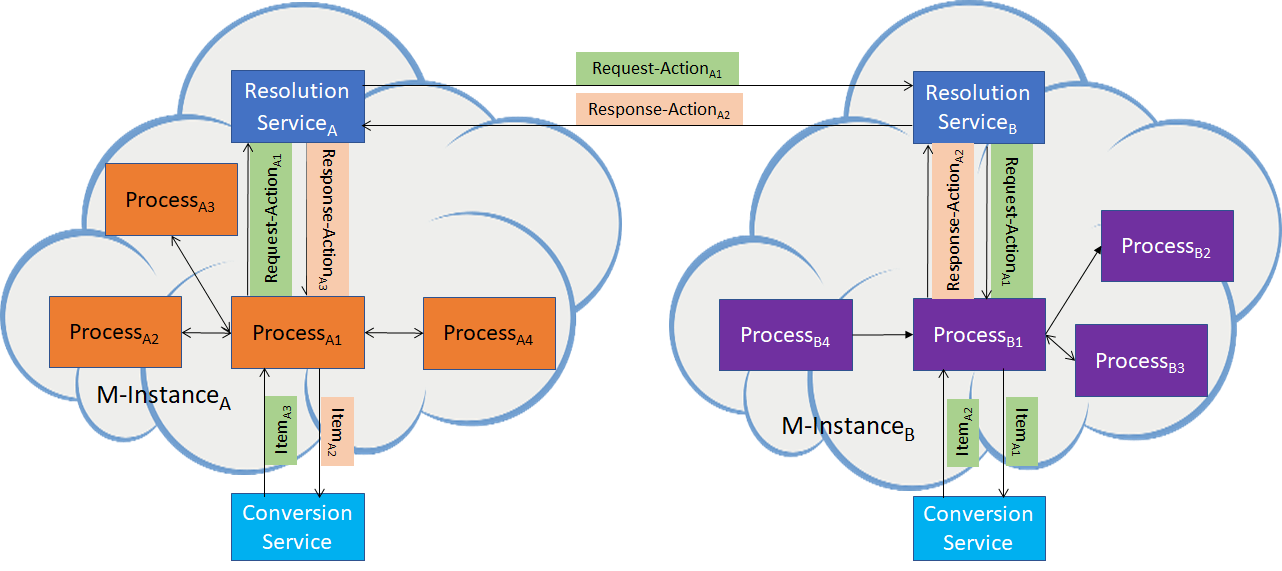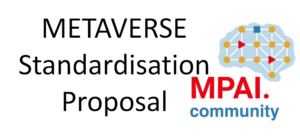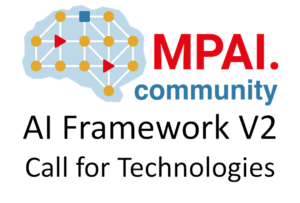The dozens of metaverse definitions that people have attempted over the years demonstrate that the word conveys different meanings to different people. Without trying to join the attempts, metaverse can be characterised as a system that captures and processes data from the real world, combines it with internally generated data, and creates virtual environments humans interact with.
So far, metaverse designers have made independent technology choices, often without considering those of other developers. Recently, however, concerns have been raised about the metaverse as “walled gardens” because these do not fully exploit the opportunities conveyed by this word. The request is that metaverse should be “interoperable”.
Since early 2022, MPAI – Moving Picture, Audio, and Data Coding by Artificial Intelligence – the international, unaffiliated, non-profit organisation developing standards for AI-based data coding, has pondered the issue of metaverse interoperability. It has done so because metaverse is a promising service area to which MPAI members can offer their expertise and because it can be seen as a platform allowing the integration of many data coding technologies, including some from MPAI.
Interoperability – the ability of a metaverse instance (M-Instance) to exchange and make use of the data of another M-Instance – needs its attributes to convey shared meanings. Direct interoperability refers to the case when the communication-enabling technologies are specified.

This can hardly be applied to the current metaverse context because technologies are fast-evolving, and the number of ways they can be applied is just too large. Mediated interoperability refers to the case when data conversion services make up for incompatibilities created by the “everyone for himself” approach.

This can work in simple cases, but conversion cannot cope with the large variety of technology combinations. Often, independently adopted data formats cannot be converted to other independently adopted data formats as shown in the following figure where two components of a data format of M-InstanceA maps into two data formats of M-InstanceB, but cannot be converted to a third data format because M-InstanceB does not support it.

MPAI has adopted the so-called functional interoperability. It has identified functionalities (some 150 of them) that an M-Instance exposes to another M-Instance or device in Technical Report: MPAI Metaverse Model – Functionalities (January 2023). The large number of application domains has suggested the adaptation of the notion of Profile (a subset of the technologies used in a standard) to the metaverse case where technologies may come from several standards. These considerations are found in Technical Report: MPAI Metaverse Model – Functionality Profiles.
Technical Specification: MPAI Metaverse Model – Architecture, published on 23 August 2023 with a request for Community Comments by 21 September 2023, is a complete functional interoperability specification as applied to the metaverse containing:
- Scope (normative). The coverage of the Technical Specification.
- Terms and definitions (normative). A comprehensive collection of all terms used in the Specification.
- Metaverse Functionalities (informative). A revision of MPAI Metaverse Model – Functionalities documenting the functionalities supported by the Architecture Specification.
- Metaverse Operation Model (normative). The Components of an M-Instance and the sequence of steps that are involved in Functionality provision. The Components are Processes performing Actions on Items (data and metadata supported by an M-Instance): Users (representing humans rendered as Personae), Devices (connecting humans with Users), Services, and Apps. The Figure below depicts the relationships between Components (normative).

- Functional Requirements of Processes, Actions, Items, and Data Types (normative). The functional requirements of the four types of Process, the Actions that a Process can perform, the data and metadata, and the various data types used by an M-Instance (normative).
- Use Cases (informative). A collection of nine use cases to verify the completeness and functionality of the Model . Each use case examines the use of Processes, Actions, Items, and Data Types.
- Functional Profiles (normative), a revision of MPAI Metaverse Model – Functionality Profiles, identifies four profiles:
- Baseline supports metaverse activity without registration.
- Finance enables trading of assets.
- Management – a superset of Baseline and Finance – supports applications where Users manage rights to perform Actions.
- High contains all other profiles with additional functionalities.

Work is continuing with the development of a set of metaverse APIs in line with the Architecture Specification and the development of a “Table of Contents” for a future metaverse technology specification.



